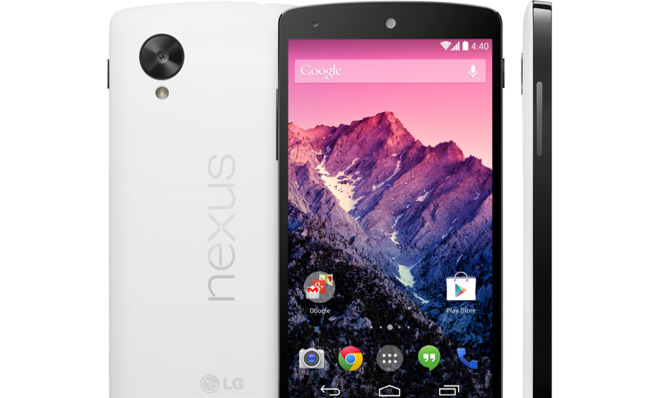The 6 best low-cost smartphones
The OnePlus One and others will get you to think outside the iPhone

When I pulled the new One phone, made by Chinese manufacturer OnePlus, out of its box, I was stunned by its fit and finish. I was also stunned by its retail price: $299 with 16 gigabytes of storage, and $349 for 64GB. Compare that to an iPhone 5S ($649) or a Galaxy S5 ($599), which are standard retail prices, and you have to wonder whether the One's competitors are worth the extra price.
The OnePlus One isn't the only solid piece of hardware going for a more affordable price. It's part of a broader trend toward low-cost smartphones. Here are some options on the market:
OnePlus One
The Week
Escape your echo chamber. Get the facts behind the news, plus analysis from multiple perspectives.

Sign up for The Week's Free Newsletters
From our morning news briefing to a weekly Good News Newsletter, get the best of The Week delivered directly to your inbox.
From our morning news briefing to a weekly Good News Newsletter, get the best of The Week delivered directly to your inbox.
The One has a 5.5-inch, 1920x1080 resolution screen with a speedy SnapDragon 801 quad-core processor from Qualcomm. It has 3GB of ram, and a 13-mega pixel camera. And it competes with top-tier phones at half the price.
It runs a custom version of the Android OS, which means there's no unwanted trial software. Nearly every aspect can be specified by the user, from changing the function of different buttons to altering the lock screen, all without the need of third-party solutions.
The phone is an advanced user's dream, but still manageable and beginner-friendly. The One is popular enough that the company has to use an invite system to slowly let interested people buy the phone, just to keep a lid on demand.
Moto G & Moto E
A free daily email with the biggest news stories of the day – and the best features from TheWeek.com
Even if you don't need the latest and greatest phone, a middle-of-the-road phone off contract can still easily cost north of $300.
Motorola's Moto G and Moto E, on the other hand, cost $199 and $129, respectively. Both come with small amounts of storage — 8GB for the Moto G, 4GB for the Moto E — but can be expanded by adding a microSD card.
Despite the average specs of the G and the lower-end specs of the E, each has received decent reviews. The phones perform as advertised, while keeping the costs down. And both phones come with the latest version of the Android OS, and will be supported into the future.
Xiaomi Mi 4
Chinese company Xiaomi has been releasing low-cost, high-quality devices for a while, and the Mi 4 is its latest. If looks almost exactly like Apple's iPhone 5.
Its specs are similar to the OnePlus One, meaning it's plenty capable of handling the latest and greatest apps and tasks. The Mi 4 won't be available in the U.S. on launch, but Xiaomi hired a top Google executive last year to expand international operations, which means the device may make it stateside at some point.
Nokia 635
On the Windows Phone side of the market, there's the new Nokia 635. The device is retailing between $159 and $189, depending on whether it is LTE-capable (high speed data) or not.
Windows Phone is Microsoft's answer to iOS and Android. Its advantages include live tiles that provide data at a glance, much like widgets do on Android.
Being late to the party, Microsoft has been able to learn from Android and iOS. It's usually able to offer the best features of both competitors as well. However, the Nokia 635, while offering a less expensive way to enter the Windows Phone ecosystem, hasn't received the best reviews due to some of its internal hardware choices. But hey, it comes in different colors.
Nexus 5
The Nexus 5 is Google's official Android phone, which it offers unlocked and off-contract to consumers. The Nexus 5 is about a year old and may be replaced soon, but it's still a solid product. It retails at $349 for the 16GB model and $399 for the 32GB version.
The phone is made by LG, which also made the Nexus 4. These devices have been a nice option for Android enthusiasts, but they're also a great way to get a good phone for a lot less than full retail price.
Other benefits include up-to-date software updates. Wireless carriers are usually middle men for companies launching phone updates. For example, the latest version of Android is 4.4.4, but if you check your phone, it's probably a few versions back. The Nexus 5 gets its updates directly from Google in a timely manner.
Tyler Hayes is a freelance writer living in Southern California. He's just as obsessed with discovering new music as he is with trying new technology.
-
 Political cartoons for January 3
Political cartoons for January 3Cartoons Saturday's political cartoons include citizen journalists, self-reflective AI, and Donald Trump's transparency
-
 Into the Woods: a ‘hypnotic’ production
Into the Woods: a ‘hypnotic’ productionThe Week Recommends Jordan Fein’s revival of the much-loved Stephen Sondheim musical is ‘sharp, propulsive and often very funny’
-
 ‘Let 2026 be a year of reckoning’
‘Let 2026 be a year of reckoning’Instant Opinion Opinion, comment and editorials of the day